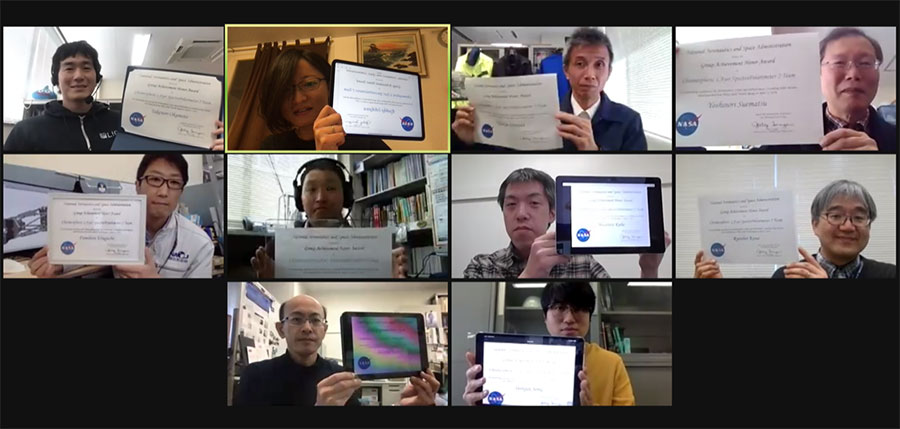CLASP2 Team Receives NASA/MSFC Group Achievement Honor Award
| Topics

The Japan-US-Europe Joint Rocket Experiment (CLASP2) team received the Marshall Space Flight Center (MSFC) Group Achievement Honor Award from the National Aeronautics and Space Administration (NASA). This award recognizes groups that have achieved outstanding results through combining their individual skills. The reward recipients include 14 people from Japan who were involved in the development of the project.
CLASP2 (Chromospheric LAyer Spectro-Polarimeter) is a solar observation experiment launched on a NASA rocket. The development of the rocket-borne instruments was led by NAOJ, in cooperation with France and the United States of America. CLASP2 was launched from the White Sands Missile Range in New Mexico, USA, on April 11, 2019 (local time), and succeeded in performing high-precision spectro-polarimetry in the near-ultraviolet region (near the 280 nm spectral line of ionized magnesium) for the first time in the world.
“We started the development of CLASP2 in 2015, right after its predecessor, CLASP, was launched.” says the Japanese principal investigator, Assistant Professor Ryohko Ishikawa (NAOJ), “I am very happy that our hard work and the teamwork between Japan, the USA, and Europe over the four years between the launch of CLASP and the launch of CLASP2 in 2019 have been recognized in this way. CLASP and CLASP2 have been groundbreaking instruments that have successfully tackled the observation of polarized ultraviolet light, which had been considered difficult until then. In order to achieve this, we brought together the technologies of the Advanced Technology Center of NAOJ and domestic and overseas manufacturers. I would like to thank not only the team members but also all the people who were involved in CLASP2.”
At the same time as the award, the first scientific results of CLASP2 were also announced (CLASP2 initial results can be found here). In collaboration with the Hinode satellite, the team succeeded in mapping the magnetic field from the visible solar surface to just below the corona. The team is now working on further analysis, and a variety of scientific results are expected in the future.
Related Links
- CLASP2 Team Receives NASA/MSFC Group Achievement Honor Award (Solar Science Observatory)
- NASA/MSFC Group Achievement Honor Award (PDF)
- Sounding Rocket CLASP2 Elucidates Solar Magnetic Field (February 20, 2021)
- Sounding Rocket CLASP2 Elucidates Solar Magnetic Field up to the Base of the Corona (Solar Science Observatory)
- CLASP2 Rocket Experiment Launched (April 23, 2019)